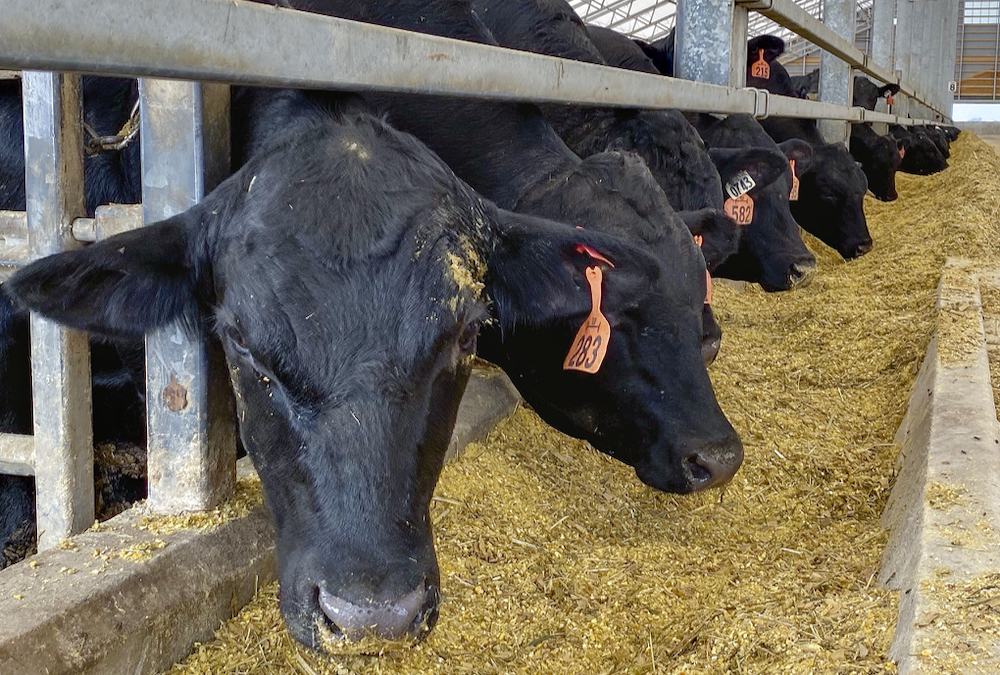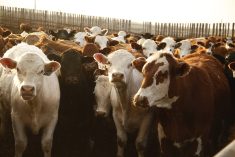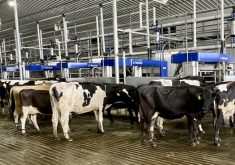Monitoring the behaviour of cattle at the feed bunk can help maintain rumen health and improve efficiencies in feedlots.
Given crop production costs, feed inputs and time invested in nutritional inputs and ration formulation, producers want to maximize return wherever possible.
Why it matters: Bunk management can help cattle feeders improve delivery efficiencies and maximize gain.
Read Also

Dissolving eartags could make pig traceability easier
A dissolving eartag for market hogs, called Clean Trace could reduce processing challenges and enable more individual management of pigs.
“You don’t want to throw out all that hard work by mismanaging the feed bunk,” said Megan Van Schaik, beef cattle specialist with the Ontario agriculture ministry.
“We’re talking about the timing of feeding, frequency of feeding … about paying attention to dry matter intake, looking at that feed disappearance … and consistency.”
A recent study by the provincial agriculture department and the Ontario Corn-Fed beef program showed bunk management can increase feed and gain efficiencies.
Van Schaik and Brent Cavell of the Ontario Cattle Feeders Association discussed easy-to-implement bunk management strategies during a recent field day at an Elmira area farm in September.
Using a six-point scoring method created at South Dakota State University, Van Schaik said producers can measure dry matter intake without the need for sophisticated equipment.
Measurements are based on the original feed delivery and vary from zero for an empty bunk, 0.5 for scattered feed remaining, one for a uniform corn-kernel deep level of feed to four, where the feed is virtually untouched and the crown is still noticeable.
The process requires several days of scoring and assessment of cattle behaviour and environment. For example, unseasonably hot or cold weather can influence how much and when cattle feed.
Van Shaik said the same person must deliver the feed and record bunk scores so a consistent data set is provided, given that feed assessment can be subjective. Trail cameras also provide unbiased estimates of how often cattle come to the feed bunk.
In 2020, the Ontario agriculture department partnered with the Ontario Corn-Fed beef program to study the relationships between bunk management and cattle feeding behaviour and discovered, on average, that bunks remain empty for 5.5 hours over 24 hours. Van Shaik said 13 hours was the longest period recorded but two to three hours would be the ideal.
The study explored gain differences between cattle that were provided constant free feed access compared to consistent but controlled access.
Cavell shared a study of two groups of 120-day feedlot of cattle using controlled and free access feed. The feed-to-gain ratio difference was 5.38 pounds of dry matter per day among those in controlled feeding, versus 9.4 lb. per day in cattle with free access.
The controlled group showed a gain of 3.76 pounds per day on 20.2 lb. of total feed intake daily, while the group with all-day food access gained 2.07 lb. per day on 19.6 lb. of daily intake.
The study report says consistency in feed delivery, feed mix order and mix time assisted in stabilizing ruminal fermentation and pH, which improved feed efficiency.
Feeding less, but more often, reduces bunk aggression and although cattle may consume less at each visit, it encourages increased bunk visits for a more consistent feed intake, which contributes to good rumen health.
“Bunk management is a real critical criterion,” said Cavell. “The pH level in the rumen has to stay within a certain range, and if you deviate from that, you’re going to see problems.”
Monitoring feeding behaviour and bunk scores can indicate whether a producer needs to increase, reduce or maintain feed deliveries. Any change should be done gradually without exceeding a three to five per cent change in dry matter delivery. Anything higher can disrupt intake and cause digestive upsets.
Additionally, Cavell said cattle feeders should monitor outside factors such as cattle behaviour and health, manure consistency and weather when assessing and using bunk data.













